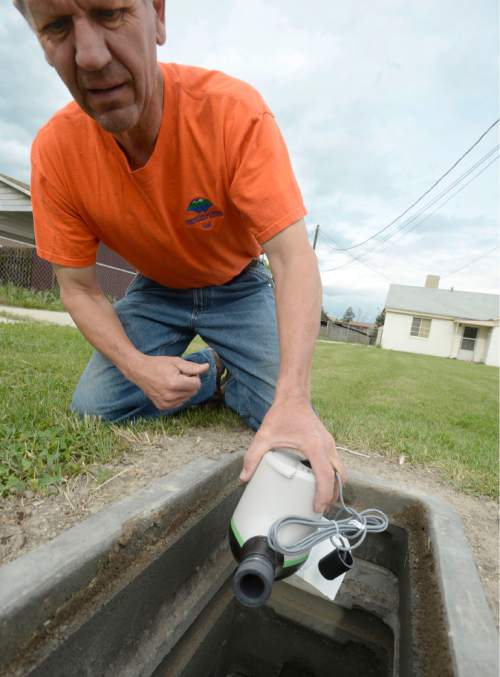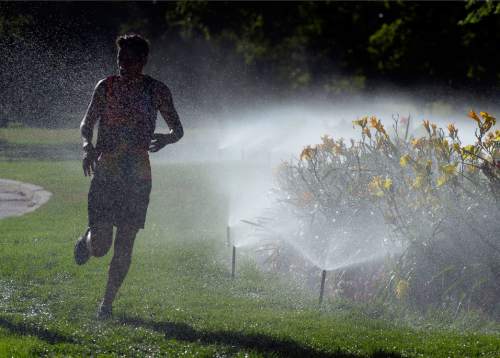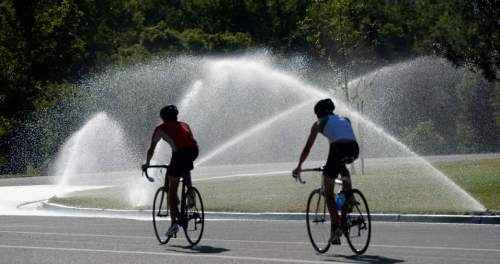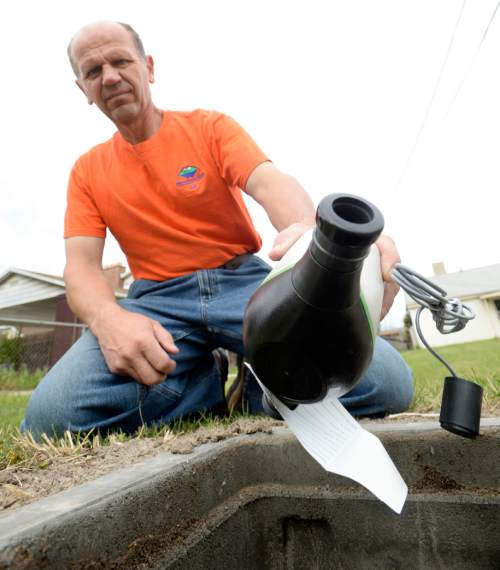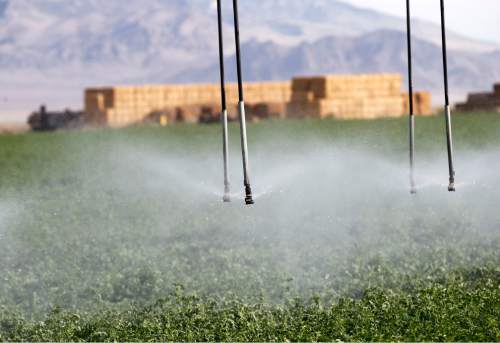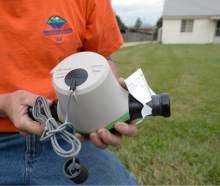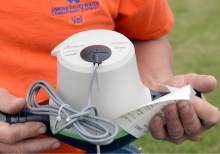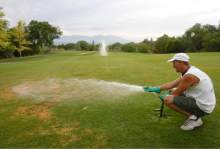This is an archived article that was published on sltrib.com in 2015, and information in the article may be outdated. It is provided only for personal research purposes and may not be reprinted.
Utah is water-deficient. But so is the information state water managers collect.
In an analysis released Tuesday, state legislative auditors determined Utah's Division of Water Resources is relying on old data to project water needs in the nation's second-driest state and does not adequately account for conservation's impact on future demand.
Current estimates, based on bad water agency data auditors found, project Utahns' demand for water will outstrip the state's supply of the wet stuff in 25 years. At the same time, the state's population is projected to double to nearly 6 million by 2060.
To keep up, state and regional water managers figure the state will need $33 billion in coming decades just to maintain current water infrastructure and develop new water sources. And that doesn't include the more than $2 billion estimated cost of the Lake Powell Pipeline and the Bear River damming project.
But the formula for Utah's water equation may be faulty, auditors concluded.
State lawmakers reviewing the report Tuesday sent it out to several legislative subcommittees to study this summer and make recommendations for the 2016 Legislature.
" I want to know: Do we need to build the Lake Powell Pipeline or the Bear River Project, or not?" said Salt Lake City Democratic Rep. Brian King. "We need the best available information."
As a first step to finding that answer, auditors recommended requiring better data about Utahns' water use from regional and local water agencies. That information is collected every five years; auditors recommended gathering it annually.
Water managers then should raise the cost of water to encourage conservation, maintain current systems and build new storage options.
"The Division of Water Resources has been using bad data to support billions of dollars in unnecessary spending for massive water projects," said Zach Frankel, executive director of the Utah Rivers Council. "This marks the first time in two decades this agency will have any oversight."
Division of Water Resources managers agreed with many of the auditors' findings and recommendations.
But Utah Department of Natural Resources Executive Director Michael Styler, who oversees state water planning, said changing Utahns' behavior will take political will.
"They are suggesting to look at ways to alter demand, and that is saying folks should consider changing their way of life in choosing how they use water," Styler said. "It takes a lot of courage to tell people we are changing your water pricing to encourage you to conserve water. It will take great courage in this time when water is really our most valuable renewable resource."
The 82-page report took 16 months to complete and was requested by legislators at the urging of conservation groups and others who want the state to better manage its water.
Utahns' unquenchable thirst is projected to outpace the state's current water supply around 2040.
To provide water for future populations, state managers have been ordered by the Legislature to prepare for two massive water projects. Plans for the proposed southern Utah pipeline and series of northern Utah dams are based on needs projected by the Division of Water Resources.
Data used to gauge future water demand are based on estimates of municipal and industrial water use from 2000, which set Utahns' per-capita water use at 293 gallons a day (gpcd). That figure for residential, commercial, industrial and institutional users is applied to most of the agency's decisions.
State auditors Tuesday cast doubt on that number.
"It is important that this per-capita water-use rate is accurate," they wrote.
Division number crunchers depend on local and regional water agencies to report per-capita use. "Accurate water use data is critical," the report continued. "Unfortunately, we found that the data submitted to the Division of Water Rights contains significant inaccuracies."
A five-year cycle of water data collection is not enough, auditors concluded. Their report suggests analysis of water use should be done annually.
Auditors also say the current "investment" of one staffer responsible for overseeing water use data is not enough. Lawmakers will have to come up with more funding to support additional agency reporting.
At the same time, water agency staff may need better training to report the information accurately to the state. One system's reported water use fluctuated wildly from year to year "due to misunderstandings by city staff regarding how to interpret the city's water-metering systems."
At the same time, some city leaders may fear losing water rights if they report unused portions. That can lead to an overstatement of water use to keep the state engineer at bay, auditors found.
And it seems some agencies do not take the per-capita use number seriously. Auditors suggested the Legislature grant the division statutory authority to validate the data sent in from water agencies.
State water managers say they are limited by the information they receive from water agencies.
"The audit addressed things we have seen as issues for a number of years," said Eric Millis, division director. "We have been trying to do the best we could with what was available. We understand, as we go into the future, water is a big challenge, and decisions will need to be made with more sophisticated data."
Finally, while conservation is a major part of the agency's mission and responsibilities, meeting water-use reduction goals is a challenge.
"To some extent, promoting the full development and utilization of water in the state is at odds with promoting conservation," the report stated. "In fact, in a legislative committee, one member questioned whether Utah should wait to promote conservation until after the state has developed its full allocation of interstate waters."
Conservation groups have been saying for decades that Utah's thirst for water is artificially inflated because prices are so low and waste is rampant.
Auditors suggested metering of all service connections to reinforce the value of water and encouraged the Legislature to consider "adopting policies that will require the phasing in of universal metering."
Many secondary water systems throughout the state do not require metering and offer low-price options for sometimes unlimited use.
"Utahns have the highest [per-person] water use in the U.S. in part because the division has been discouraging water conservation for decades," Frankel said in a release Monday. "It is high time we made sure the agency pushing for billions in new tax spending is held accountable."
Auditors said the hypothesis that Utah's water will run out in a little more than two decades needs to be flushed. They noted that the state is expected to reach its current conservation goal — cutting water use by 25 percent — in 2025.
"We believe current trends suggest per-person water use in Utah should continue to decline for the next several decades," they wrote. "If use does decline further, then the date when water demand exceeds supply may be delayed."
The analysts also suggested the state water agency is "understating" growth in Utah's available water supply as agricultural lands convert from farmland to houses, strip malls and roads.
Agriculture is by far the biggest drain on the state's water resources — fully 82 percent of the water used each year. With the inexorable transition of farmland to homes, auditors noted, the amount of water used on the land will be greatly reduced. That, they said, is a net gain in future water.
"Local supplies may also grow as cities develop the remaining capacity of existing groundwater and surface water sources," auditors wrote. "By excluding this added water supply, the projections accelerate the time frames for developing costly, large-scale water projects."
They recommended developing better regional plans. State policymakers then can better decide whether to pursue big water projects, including the plans for Bear River and Lake Powell.
Twitter: @BrettPrettyman


